Table of Contents |
World War II took a tremendous toll on the world’s population. Estimates of the total number of military and civilian deaths range between 60 and 80 million people, making it the deadliest conflict in human history.
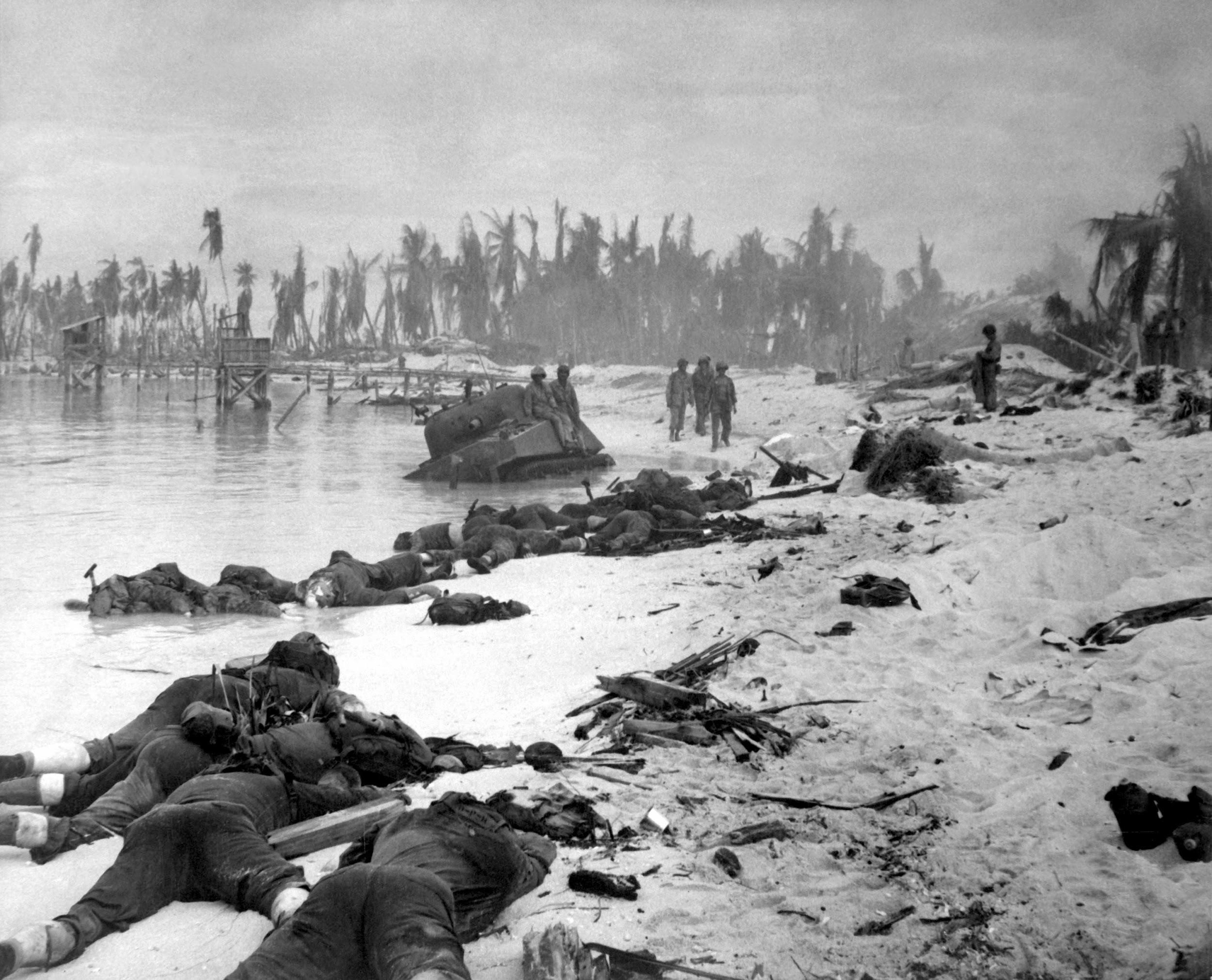
Because fighting took place exclusively in Europe and the Pacific region, the United States suffered very few civilian casualties, as shown in the graph below. American servicemen who died during the war served their nation proudly and bravely. However, when U.S. casualties are placed in a global context, it is clear that few Americans were touched by the death and devastation that affected millions of individuals elsewhere.
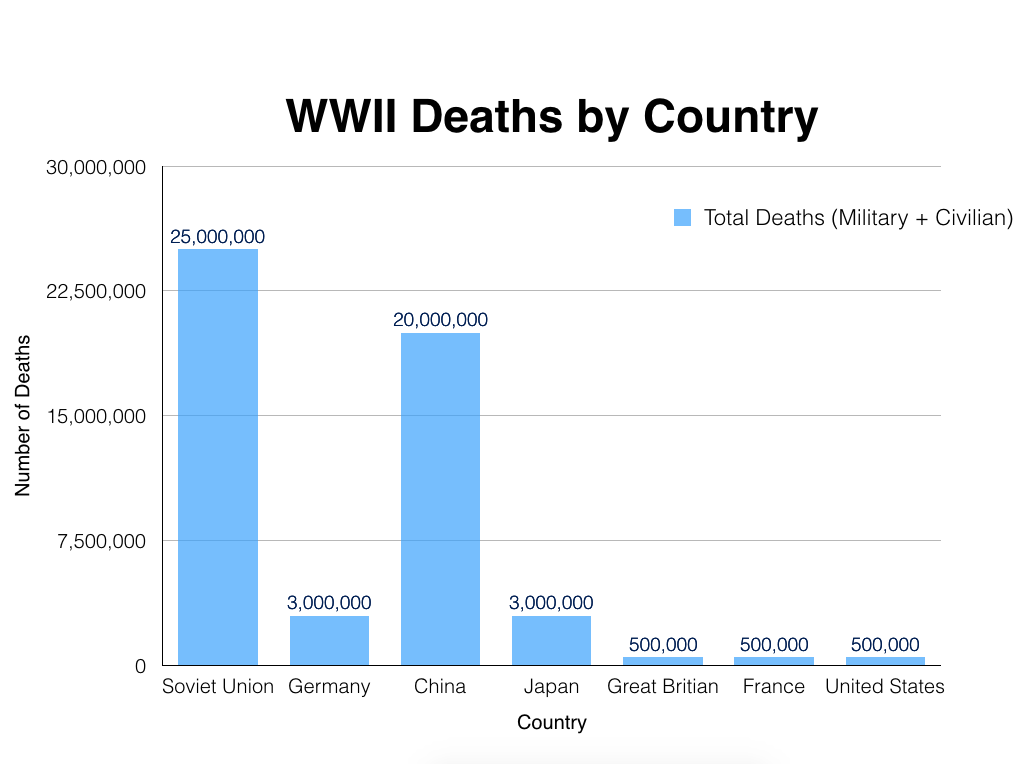
In addition to experiencing relatively light casualties, the United States left World War II with its infrastructure and economy intact. The same could not be said for its allies and the former Axis Powers.
The movement of armies across Europe, Africa, Asia, and the Pacific region laid waste to significant portions of the world. Urban combat (in Stalingrad, Leningrad, and other locations) and the Allied bombing of Germany and Japan leveled cities, destroyed railroads and bridges, and obliterated factories.
EXAMPLE
During the spring and summer of 1945, the United States used “firebombing,” or the dropping of incendiary bombs containing gelatinized gasoline, against Japan. This air campaign destroyed significant portions of Tokyo and other Japanese cities, and it killed approximately 900,000 people. More than 8 million people were left homeless.
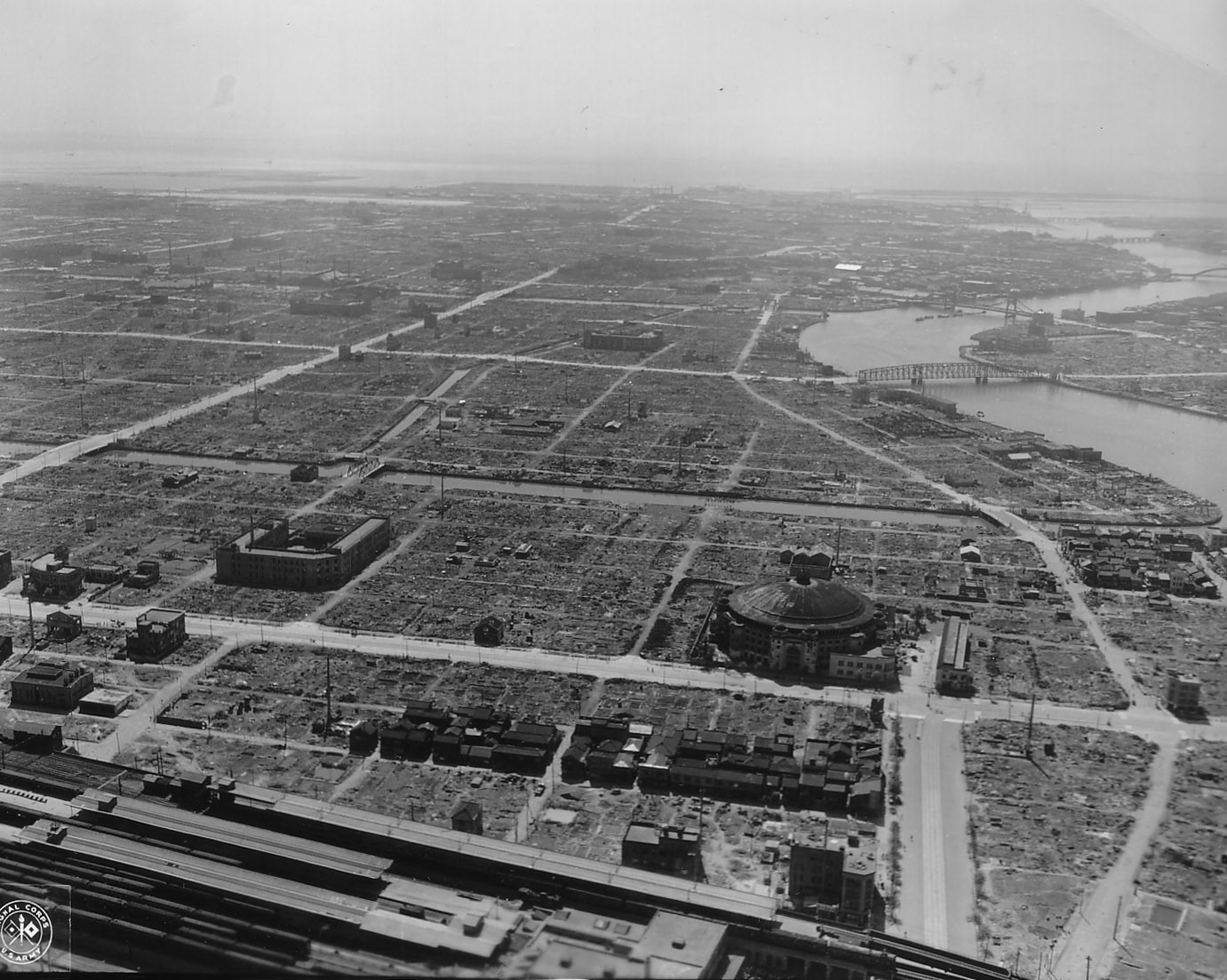
Americans waited eagerly for U.S. soldiers to come home. However, many people in Europe did not have homes or, in some cases, even a country to return to.
A major refugee crisis existed at the end of the war in Europe. The Allies also had to establish new governments and, when necessary, redraw national boundaries in areas formerly occupied by Nazi Germany. The Holocaust—Hitler’s plan to exterminate European Jews in concentration camps—resulted in the deaths of 11 million people and displaced millions more.
In Africa and Asia, groups opposed to colonial rule used the end of the war as an opportunity to seek independence.
EXAMPLE
In September 1945, Vietnam, which had been a French colony since the 19th century, declared independence. In 1946, the United States granted independence to the Philippines.In some cases, the rise of nationalist movements indicated the weakness of France, Great Britain, and other colonial powers following World War II. Given their postwar condition, these nations sometimes gave in to independence movements following prolonged negotiations.
EXAMPLE
In 1947, Great Britain granted independence to India and established the nation of Pakistan.In other instances, these nations tried to retain control of their colonies. France refused to recognize Vietnamese independence. Instead, it attempted to reassert control of the region. France was opposed by a nationalist movement led by Ho Chi Minh.

The reestablishment of governments in Europe, combined with decolonization in Africa and Asia, fueled the rivalry between the United States and the U.S.S.R. Both countries viewed postwar turmoil as an opportunity to expand their strategic interests and ideologies.
The tensions between the United States and the Soviet Union that led to the Cold War began during World War II. During the war, Joseph Stalin, the premier of the Soviet Union, expressed frustration with the apparent unwillingness of the United States to establish a “second front” against Nazi Germany in Europe.
Because the United States and its allies did not open the “second front” until the D-Day invasion, Stalin believed that the Soviet Union bore the brunt of the conflict against Germany.
Differences in the wartime objectives of both countries became clear in 1945 when Stalin, Roosevelt, and Churchill met at the Yalta Conference to discuss the future of Europe and the postwar order.
At the time of the Yalta Conference, the Red Army was pushing German forces back toward Berlin. The Soviets occupied vast portions of Eastern Europe that were abandoned by the retreating Germans. British and American forces had liberated France and were moving into Germany from the West. Roosevelt, who was elected to an unprecedented fourth term as president the previous November, was visibly ill during the meeting.
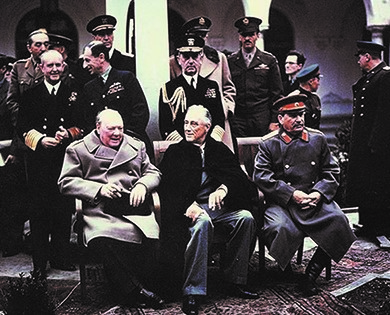
The discussions at Yalta took the Soviet Union’s strong position in Eastern Europe and its sacrifices during the war into account. Stalin was determined to expand Soviet influence into Poland and other Eastern and Southern European nations by establishing pro-Soviet communist governments in them. He believed these countries would help protect the U.S.S.R. from future invasion by Germany.
Roosevelt and Churchill agreed to allow the communist government that the Soviets had installed in Poland to remain until the war in Europe was over. Free elections were to be held at that time. Stalin reaffirmed his commitment that the Soviet Union would join the United States in the war against Japan after Germany surrendered. He also agreed that the U.S.S.R. would join the United Nations, an international peacekeeping body organized in 1944 that replaced the League of Nations.
The Yalta conference left several questions unanswered, including what to do with Germany following its surrender. Allied leaders decided to postpone discussion on that issue until they could address it at a future conference. President Roosevelt did not live long enough to participate in that discussion: He died on April 12, 1945. Harry S. Truman succeeded him as president of the United States.
When Germany surrendered in May 1945, Allied leaders met to decide its future at the Potsdam Conference.

Stalin, Truman, and Churchill (the outgoing British prime minister), along with Clement Atlee (the new British prime minister), attended the conference. Truman arrived in Potsdam troubled by Soviet actions in Europe. He disagreed with the concessions that had been made to Stalin at Yalta, which enabled the Soviet Union to control Eastern Europe.
During the conference, the Allied leaders finalized plans to divide Germany into four occupation zones to be controlled by Britain, France, the United States, and the Soviet Union. The three occupation zones controlled by Britain, France, and the United States collectively became West Germany, while the occupation zone controlled by the Soviet Union became East Germany. The city of Berlin was also split into four sectors, with Britain, France, and the United States controlling West Berlin and the Soviet Union controlling East Berlin.
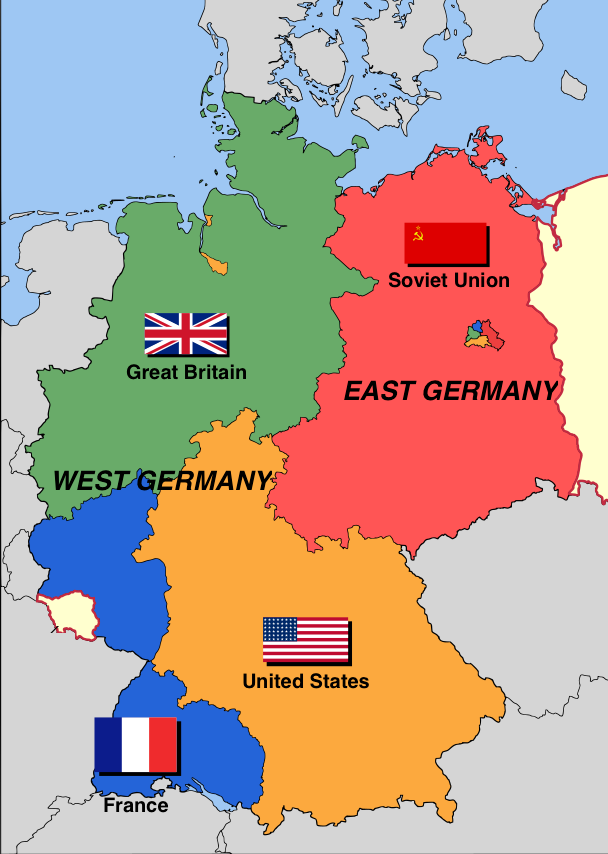
The Allies agreed to dismantle Germany’s heavy industries and prosecute Nazi officials who had engineered the Holocaust. They also acquiesced to Stalin’s request that Germany pay reparations to the Soviet Union. In addition, the Allies declared that they would only accept the unconditional surrender of Japan.
When Japan surrendered on August 15, 1945, following the dropping of the atomic bombs on Hiroshima and Nagasaki, the Allies divided the Japanese colony of Korea along the 38th parallel. The U.S.S.R. gained control of the northern half of the Korean Peninsula, while the United States oversaw the southern portion.
Geopolitical strategies and economic differences were at the root of the growing tension between the United States and the Soviet Union. The Soviets wanted to expand their influence in Eastern Europe. After having been invaded by Germany during both World Wars, Stalin hoped that the Eastern European nations allied with the Soviet Union (referred to as the Eastern Bloc in the West) would provide protection if Germany reemerged as a military power. He also believed that the Eastern Bloc would serve as a laboratory for the development of communism as a political and economic alternative to capitalism.
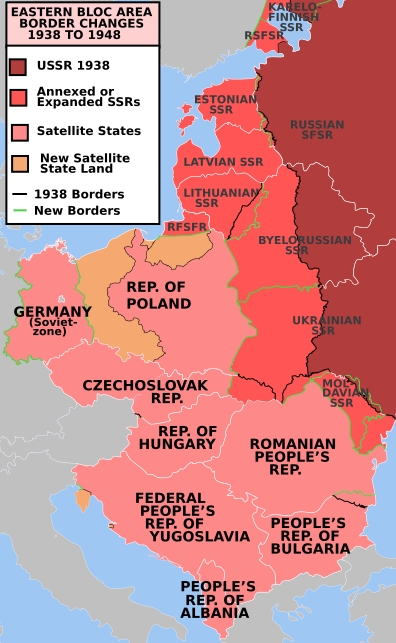
The United States emerged from World War II as an undisputed global power. Thanks to wartime mobilization, the American capitalist economy rose from the depths of the Great Depression. As other European nations lay devastated after the war, the United States became a global financial and economic center. The United States was also a potent military power—the only country that had produced functional atomic weapons.
Given the American economic situation, the devastation in Europe, and the rise of the Soviet Union, American policymakers knew that the United States could not withdraw from the world stage. It had to remain actively engaged in global affairs. Considering the recent accomplishments—successful mobilization for World War II, effective support of the Allies, and the defeat of the Axis Powers—Americans were confident that the nation could address the challenges posed by the Soviet Union.
In February 1946, George Kennan, a State Department official stationed at the U.S. Embassy in Moscow, sent an 8,000-word message to Washington that reinforced American suspicion of the Soviet Union and supported increased American participation in global affairs. In what became known as the “Long Telegram,” Kennan claimed that the U.S.S.R. wanted to continue its control of Eastern Europe. He described the Soviet Union as an aggressive, expansionist, and totalitarian bureaucracy that would not coexist peacefully with the United States.
Kennan proposed a strategy known as containment, in which the United States would limit Soviet influence to places where it already existed and prevent its expansion to new areas. He believed that communism was an unworkable political and economic system and that active containment would lead to the collapse of the Soviet Union. This strategy served as the basis of U.S. foreign and military policy throughout the Cold War.
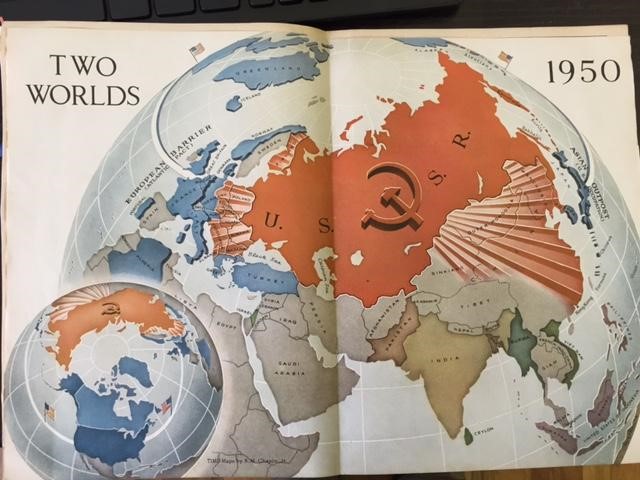
In addition to showing the close proximity of the U.S.S.R. to the United States, the map indicates that communism was ready to expand into Asia and other regions that were currently being decolonized. The United States and the Soviet Union—each convinced that its own economic system and political ideology were superior to the other’s—competed for opportunities to influence the outcomes of decolonization. The Soviet Union encouraged communist revolutions in China and elsewhere. The United States opposed communist influence by forming alliances with European, Asian, African, and Latin American nations and by helping them establish or expand prosperous, free-market economies.
Throughout their decades-long struggle for economic and ideological supremacy, the United States and the U.S.S.R. did not confront each other militarily. The Cold War was fought in other ways—including espionage and surveillance, political assassinations and government overthrow, and propaganda. The Cold War also involved an arms race, as both countries stockpiled powerful weapons. It was a time of American and Soviet intervention in developing countries around the world, sometimes with disastrous and destabilizing effects.
Source: This tutorial curated and/or authored by Matthew Pearce, Ph.D with content adapted from Openstax “U.S. History”. access for free at openstax.org/details/books/us-history LICENSE: CREATIVE COMMONS ATTRIBUTION 4.0 INTERNATIONAL